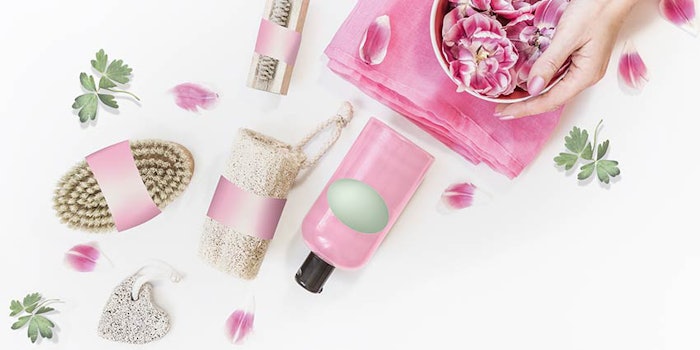
Euromonitor has released a set of six themes impacting consumer markets as a result of COVID-19, which are expected to dictate consumer spending in the post-pandemic economy: sustainability, home entertainment, consumer shopping, wellness, innovation and the new normal. In specific, the beauty industry can anticipate increased importance on ethical values, consumer expectation of experience and an acceleration of e-commerce adoption and frictionless retail.
Related: What’s Next?
As stated in the report, the economy is expected to be hit with the worst recession since the 1930s and businesses are already facing challenges related to supply chain disruptions and expeditiously changing consumer habits/needs.
Related: 9 Predictions for Indie Beauty’s Future
From sustainability to purpose
The idea of sustainability evolves beyond the inclusion of ethical credentials and environmental concerns, like plastic pollution and climate change, to a more holistic approach that aims to create social, environmental and economic value.
Health, beauty and fashion companies are moving production to the pursuit of the greater good through ethical values and brand positioning. (See the recent fallout from anti-racist protests.) Health, beauty and fashion brands must invest more in locally produced goods and concentrate on their brand heritage, transparency, safety and provenance.
Home entertainment and the new experiential consumer
Consumers redefine and adapt their daily routines as they stay at home longer, further reinforcing many of the pre-COVID-19 trends towards home entertainment and digital experiences. This creates strategic opportunities across products and services.
Augmented and virtual reality, combined with holographic experiences, will transform the online shopping channel by placing consumers in quasi physical store conditions. Beauty brands have already begun entering this realm with virtual try-on programs for makeup looks and hair dye. As luxury experiences will be more focused on the at-home universe, brands will need to secure high-quality and meaningful experiences with all channels.
Where and how consumers shop
The rise of online, click and collect, frictionless retail and direct-to-consumer (D2C) are accelerated. Retail restrictions in place during the pandemic have fast-tracked the shift to digital distribution. Retail operations and consumer demands will prompt new strategies.
The distribution of beauty and fashion products is being heavily impacted by COVID-19 given physical retail dependence, over-reliance on wholesale and underdeveloped e-commerce capabilities. COVID-19 has emerged as the ultimate retail disruptor, with the potential to accelerate e-commerce adoption, expand click and collect formats and catalyze frictionless retail and D2C operations worldwide.
With the surge in e-commerce, D2C brands come to the forefront, raising brand awareness and customer acquisition through a variety of platforms, from e-commerce presence on Amazon to sales on brand shopping sites and subscription models.
Click and collect and alternative check-out options have become expected, and social selling, super apps and marketplaces have grown drastically in importance. Significant shifts in who is shopping and how often implies changes to how retailers and brands market, merchandise and promote.
Wellness refined
The primary aspects of optimal health, health in its purest form and the adoption of a holistic approach which encompasses spiritual and physical wellness are being reinforced. Mental wellness and emotional health take center stage, with the notion of happiness becoming a more tangible commercial prospect.
The beauty and wellness convergence becomes even more prominent. Immunity and energy boosting health concepts, alongside those which support concerns related to sleep, stress and anxiety, are key beneficiaries. Digital health solutions are reinforced, and luxury wellness brands move into mental, emotional and spiritual health.
Innovation and the new “core”
In a rapidly changing operating and consumer environment, with risk averse retailers and consumers, the appetite for experimentation is diminished. Innovation will be driven by the demand for immunity/health-boosting ingredients, for which consumers will pay a premium.
Prominent innovations involve providing home-based services for customers, including beauty consultations and DIY content. At the same time, companies are reorienting around simpler, more cost effective product lines like private label and general health products, and by streamlining manufacturing processes.
Trading down and away from physical outlets could drive new spending and upgraded experiences elsewhere. High-end e-commerce and live streaming events to expand as launchpads for new brands and new products.
The “new normal:” what’s here to stay?
How consumers work, shop, eat, drink and play will be driven by lingering home seclusion. Changes to the consumer mindset will drive reduced consumption of non-essential items and anti-ostentation, a focus on self and family and on preventative and immune health.
For health, beauty and fashion, new attitudes toward physical distance, health and remote working will create opportunities related to therapeutic properties and mental well-being. Companies will work to diversify supply chains, while continuing to invest in digital tech and virtual experiences to maintain engagement.
Retailers will focus on their value proposition and technology. As the technology gap grows between laggards and adopters, sales will disproportionately go to the adopters, resulting in a more consolidated retail landscape globally. Shopping centers, inherently social, will have to work hard to draw shoppers.










